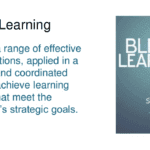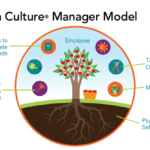Empower a Positive Culture of Learning

Whether you know it or not, you already have a culture of learning in your organization. If you employ humans, learning is happening in your workplace every day because we are biologically wired to learn—we can’t stop ourselves from it.
The real question is whether you are empowering a positive culture of learning that enhances the success of your organization or one that breeds conformity and stagnation.
How organizations with poor learning cultures experience turnover of their top talent, struggle to keep their customers, and ultimately fall behind their competitors on a number of fronts. They may seem profitable on paper for a bit but ultimately the costs of the human factor catch up and they fail in the end.
The organizations that not only succeed but flourish and thrive, empower positive cultures of learning. Let me share with you a few ways you can do this:
1. Honor the ever-present nature of learning
Learning is happening every day in your organization. People learn on their own, through experience and exploration. They learn by watching others, discovering the behaviors that are rewarded and ignored.
People help each other learn through those small moments of advising, guiding and coaching. Learning is not an event to be scheduled nor something that is owned by one department. Learning and Development (L&D) should be the group driving the conversation and creating the culture and environment where learning is celebrated and supported.
2. It’s important to value learning as a path to mastery
The process of learning involves curiosity, exploration, taking risks and most importantly, making mistakes. No one ever really develops mastery without those ever important stumbles. This means that you need to create a culture where it is safe to take risks and make mistakes, in every department, not just your learning events. This also means that people celebrate “aha” moments just as much as they do the results or successes.
3. Transform managers into coaches
A key to creating this culture is to ensure that your managers know how to coach effectively. Coaching is a powerful tool in the learning process because it helps employees build their competence and confidence. Managers need to know how to apply the right blend of skills coaching and clarity coaching. I’m also a big fan of appreciative inquiry because it helps employees know how to harness their peak performances to make them daily occurrences.
4. Value growth and improvement in your performance system
If you only assess how people perform, then you are missing an opportunity to empower a positive learning culture. Most performance rating systems are based on outcomes, not effort. But several studies have shown that when people are measured on growth and improvement, they step up and improve.
We all know top performers who never grow or improve–they have managed to find a job that is a nice match to their current skills. And while they may do good work, they are not reaching for their fullest potential.
I recommend that you also assess every employee’s growth, which you can measure through the effort put into learning, measurable improvement in a skill, and passion for growing. This should comprise a quarter to a third of your overall assessment and means that in addition to top performers getting rewards, your top learners get rewards too. A positive learning culture recognizes and rewards all growth and improvement.
5. Make learning easily accessible
This is critical. On-demand learning empowers employees to seek and find their own answers when they need them most. Neuroscientists state that this type of learning is retained far longer than just being told what to do and it also aligns with best practices in adult learning theory.
It doesn’t help me much to sign up for a class that will happen 3 weeks from now and through which I have to sit through 4 hours to get the answer I need. And what’s easier than watching a short video that you can access 24/7 from any device? That’s honestly why I am such a fan of microlearning such as LinkedIn Learning and my new training platform. When I am stuck, I need the answer quickly.
All kinds of valuable learning can be made accessible to employees and you’ll find that technology must be a vital part of your learning strategy.
6. Use blended learning to maximize your options
Remember, not every type of learning works for every person or situation. This is why you need to use blended learning to maximize your options.
For example, in-person learning can contextualize learning for your organization, and provide opportunities for hands-on application as well as collaboration. Online instruction, are perfect for self-paced learning or as the pre-learning for an in-person event.
7. New ways to leverage virtual reality
Virtual reality is playing a major role in neuro-recovery but that’s not the only development along these lines. It turns out that virtual reality is quite powerful because it replicates the first-person point of view (POV) that we have in our own bodies. While not perfect, it is realistic enough to elicit biological responses in the body.
Companies are now training employees in virtual settings, giving them real memories of places and skills. For example, one oil company has filmed several of their deep-sea ocean rigs so that employees can become familiar with these dangerous work environments before setting foot on them. And a plane manufacturer is using VR to give new employees the experience of riveting the fuselage. They created VR footage of a top performing employee doing the work so that when the trainees look down, they see “their” body doing the work correctly. Obviously, VR cannot replace actually doing the actions, but it can certainly jump-start an employee’s learning and skill development.
Listen, you are sitting on a GOLDMINE that is just waiting to be harnessed. Your employees possess the potential to drive your organization to new heights. If you create a positive culture of learning, you will naturally reap the many benefits learning provides and set up your organization for success.
Related Blogs
JOIN OUR COMMUNITY
Be the first to know of Dr. Britt Andreatta's latest news and research.





